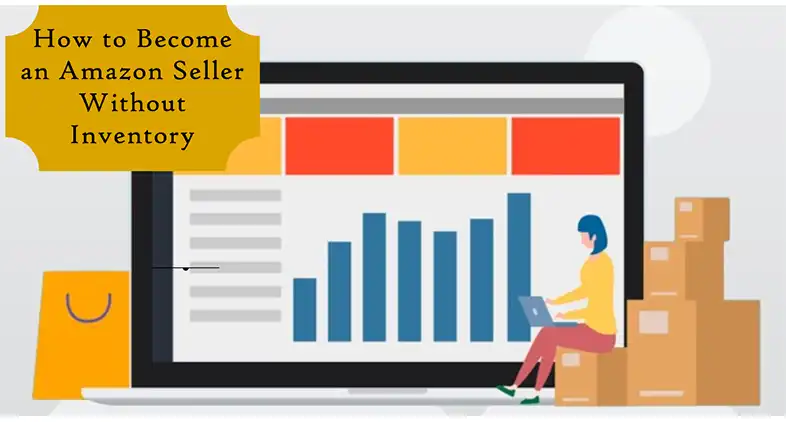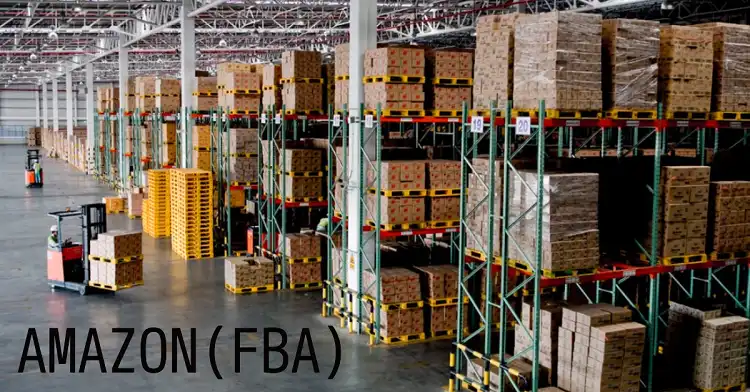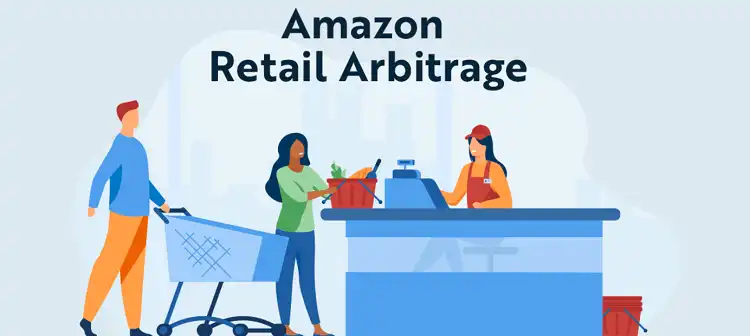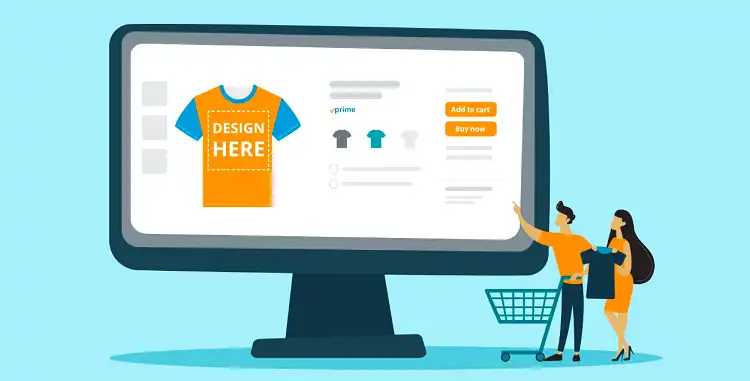Imagine waking up to a notification on your phone – you’ve just made a sale on Amazon, and the best part? You don’t have a single product sitting in your garage or a warehouse. Welcome to the world of inventory-less selling on Amazon, a game-changer for aspiring entrepreneurs and seasoned e-commerce professionals alike.
Inventory-less selling on Amazon, also known as dropshipping, retail arbitrage, or leveraging the Fulfillment by Amazon (FBA) program, has gained immense popularity among entrepreneurs seeking flexibility, scalability, and low startup costs. By partnering with suppliers or sourcing products from retail stores, you can list and sell items on Amazon without ever having to physically handle or store them.

The Benefits of Selling on Amazon without Inventory
- Low Startup Costs: Without the need to purchase inventory upfront, you can launch your Amazon business with minimal investment, reducing financial risk.
- Scalability: Since you don’t have to manage physical inventory, expanding your product line or increasing sales volume becomes much easier.
- Flexibility: With no need for a dedicated workspace or warehouse, you can run your Amazon business from anywhere, making it an attractive option for digital nomads or those seeking a location-independent lifestyle.
- Wide Product Selection: By partnering with various suppliers or sourcing from retail stores, you gain access to a vast array of products to sell on Amazon.
However, as with any business model, there are challenges and considerations to keep in mind. Finding reliable suppliers, navigating Amazon’s policies, and providing excellent customer service are just a few hurdles you’ll need to overcome.
With all of these being said, let’s now take a look at the four main methods of selling on Amazon without inventory and equip you with the knowledge and strategies to turn your entrepreneurial dreams into a thriving reality.
1. Dropshipping
Dropshipping is perhaps the most widely recognized inventory-less selling method on Amazon. In this model, you partner with a supplier or wholesaler who ships products directly to your customers after you receive an order on Amazon.

How Dropshipping Works
Here’s how dropshipping works within the Amazon ecosystem:
- You list a product on your Amazon seller account, typically sourced from a dropshipping supplier’s catalog.
- When a customer places an order for that product on Amazon, you purchase the item from your supplier at a discounted wholesale price.
- The supplier then ships the product directly to the customer, usually with your business name or Amazon’s name on the package.
- You pocket the difference between the customer’s purchase price and the supplier’s wholesale cost, minus any Amazon fees.
The beauty of dropshipping lies in its simplicity – you never have to handle or store any physical inventory, significantly reducing overhead costs and logistical complexities.
How to Find Reliable Dropshipping Suppliers
One of the most critical aspects of successful dropshipping is finding reliable and trustworthy suppliers. Here are a few options to explore:
- Listing Services & Directories
Services like Salehoo, Doba, and Wholesale Central offer access to thousands of pre-vetted dropshipping suppliers, along with tools for product research and order management. While these services typically require a monthly or annual subscription fee, they can save you significant time and effort in finding reputable suppliers.
| Pros | Cons |
| Wide selection of suppliers across various niches | Subscription fees can add up, especially for beginners with limited budgets |
| Pre-vetted suppliers, reducing the risk of dealing with unreliable sources | Competition from other sellers using the same suppliers |
| Tools and resources for product research and order management | Limited control over branding and customer experience |
- Direct Supplier Research
Alternatively, you can research and contact potential dropshipping suppliers directly. Attend trade shows, join online communities, or search supplier directories to find manufacturers or wholesalers willing to dropship their products.
| Pros | Cons |
| Potentially more unique product offerings and lower competition | Time-consuming process of vetting and negotiating with individual suppliers |
| Greater control over branding and customer experience | Higher risk of dealing with unreliable or inexperienced suppliers |
| Opportunity to build direct relationships with suppliers | Limited access to tools and resources provided by listing services |
Vetting and Building Relationships
Regardless of your approach to finding suppliers, it’s crucial to vet them thoroughly before partnering. Here are some key factors to consider:
- Product Quality: Request product samples to assess the quality and condition of the items you plan to sell.
- Shipping Times: Inquire about average shipping times and ensure they align with your customer expectations.
- Communication: Evaluate the supplier’s responsiveness and clarity in communication, as this will be critical when resolving any issues or tracking orders.
- Policies and Procedures: Understand the supplier’s policies regarding returns, exchanges, and order processing to ensure a smooth customer experience.
Building strong relationships with your suppliers is also essential for long-term success. Regular communication, providing feedback, and treating them as valued partners can go a long way in ensuring a reliable and mutually beneficial partnership.
Pros and Cons of Dropshipping on Amazon
Like any business model, dropshipping on Amazon has its advantages and drawbacks. Let’s explore them in detail:
Pros
- Low Upfront Investment: Since you don’t need to purchase inventory upfront, the startup costs for dropshipping are relatively low, making it an accessible option for entrepreneurs with limited capital.
- Wide Product Selection: By partnering with multiple suppliers, you can offer a vast array of products without being limited by physical inventory space.
- Location Independence: With no need for a physical storefront or warehouse, you can run your dropshipping business from anywhere with an internet connection.
- Scalability: As your business grows, you can easily expand your product offerings or increase sales volume without the constraints of managing physical inventory.
- Potential for Higher Profit Margins: By carefully selecting your suppliers and negotiating favorable wholesale prices, you can maximize your profit margins on each sale.
Cons
- Limited Control over Branding and Customer Experience: Since the products are shipped directly from your supplier, you have less control over packaging, branding, and the overall customer experience.
- Shipping Delays and Supplier Issues: You’re reliant on your suppliers for timely order fulfillment and quality control, which can lead to shipping delays, product defects, or other supplier-related issues that impact your customers.
- Inventory and Stock Management Challenges: While you don’t physically handle inventory, you still need to closely monitor stock levels and product availability from your suppliers to avoid overselling or listing out-of-stock items.
- Competition and Price Wars: With a low barrier to entry, dropshipping can be a highly competitive space, leading to potential price wars and slim profit margins if not executed strategically.
How to Succeed with Dropshipping on Amazon
To maximize your chances of success with dropshipping on Amazon, here are some crucial considerations:
Product Selection
Choosing the right products to sell is essential for profitability and customer satisfaction. Look for products with high demand, low competition, and healthy profit margins. Consider factors like seasonality, trends, and customer reviews when conducting product research.
Tools like Amazon’s Best Sellers Rankings, Google Trends, and keyword research tools can provide valuable insights into popular and trending products. Additionally, focus on niches or categories where you can differentiate your offerings through unique product bundles, customizations, or added value.
Setting Competitive Prices
Pricing your products competitively is key to attracting customers and maximizing profits. Start by calculating your total costs, including the supplier’s wholesale price, Amazon fees (referral fees, FBA fees if using Amazon’s fulfillment services), and any additional expenses like marketing or subscription fees.
Next, research the prices of similar products on Amazon and aim to price your offerings slightly lower than the competition, while still maintaining a healthy profit margin. Consider implementing dynamic pricing strategies, where you adjust your prices based on real-time market conditions and competitor pricing.
High-Quality Listings & Branding
Even in a dropshipping model, creating high-quality product listings is crucial for driving sales and building a brand on Amazon. Invest in professional product photography, write compelling and SEO-optimized descriptions, and highlight your unique selling points or bundled offerings.
While branding opportunities may be limited in dropshipping, explore ways to incorporate your brand identity through consistent messaging, customized packaging inserts, or personalized thank-you notes to create a memorable customer experience.
Effective Communication
Clear and timely communication with your suppliers is essential for ensuring smooth order fulfillment and addressing any potential issues. Establish regular check-ins and have contingency plans in place for situations like stock outages or shipping delays.
Promptly relay any customer inquiries or concerns to your supplier, and keep buyers informed about the status of their orders. Maintaining open lines of communication can help build trust, mitigate issues, and enhance the overall customer experience.
Customer Service
Even though you may not be handling the products directly, providing excellent customer service is paramount to your success as an Amazon seller. Be proactive in addressing customer inquiries, resolving issues promptly, and handling returns or exchanges professionally.
Consider outsourcing customer service to experienced virtual assistants or utilizing Amazon’s automated tools and services to streamline the process. Remember, positive customer experiences can lead to repeat business, glowing reviews, and a stellar seller reputation on Amazon.
2. Fulfillment by Amazon (FBA)

Amazon’s Fulfillment by Amazon (FBA) program is another powerful option for selling on the platform without initially holding inventory. With FBA, you send your products to Amazon’s fulfillment centers, and they handle the storage, picking, packing, and shipping to customers on your behalf.
How Amazon FBA Works
Here’s how the FBA model works:
- You source products from suppliers or wholesalers, just as you would in a traditional e-commerce business.
- Instead of storing the inventory yourself, you ship the products to Amazon’s fulfillment centers, where they are stored and managed by Amazon.
- When a customer places an order for your product, Amazon handles the entire fulfillment process, including picking the item from the warehouse, packing it, and shipping it to the customer.
- Amazon charges you fulfillment fees based on the size and weight of the product, along with other fees like storage fees and returns processing fees.
By leveraging Amazon’s vast fulfillment network, FBA sellers can offer faster shipping times, Prime eligibility, and improved customer satisfaction – all without the hassle of managing inventory and shipping logistics.
How to Leverage FBA for Selling Without Initial Inventory
While FBA does require you to source and ship products to Amazon, there are strategies to minimize your upfront inventory investment:
Product Research for FBA
Conduct thorough product research to identify high-demand, low-competition items with favorable profit margins and low storage fees. Amazon’s own Seller Central tools, like Best Sellers Rankings and Product Opportunity Explorer, can provide valuable insights into profitable product opportunities.
Additionally, consider third-party research platforms like Jungle Scout, Helium 10, or AMZScout, which offer advanced filters, sales data, and product scoring systems to help you make informed decisions.
Sourcing Inventory
Instead of traditional wholesale suppliers, explore cost-effective inventory sourcing options like liquidation sales, manufacturer closeouts, or online arbitrage (purchasing discounted products from retail stores or websites for resale on Amazon).
Be cautious when sourcing from unconventional channels, and ensure you are complying with Amazon’s policies and avoiding counterfeit or prohibited items.
Sending Inventory to Amazon Warehouses
Once you’ve sourced your products, prepare them for shipment to Amazon’s fulfillment centers. This process involves properly labeling and packaging your items according to Amazon’s guidelines, creating shipping plans, and scheduling pickups or arranging for shipment to Amazon’s warehouses.
Follow Amazon’s instructions carefully to avoid delays or additional fees. Consider investing in tools or services like repricers, inventory management software, or Amazon’s own FBA Inventory Placement Service to streamline the process.
How to Manage FBA Fees & Calculate Profitability
While FBA can simplify logistics and boost customer satisfaction, it’s crucial to understand and account for Amazon’s various fees to ensure profitability.
Detailed FBA Fee Breakdown
Amazon charges the following fees for the FBA program:
- Referral Fees: A percentage of the product’s selling price, ranging from 6% to 45%, depending on the product category.
- Fulfillment Fees: Fees based on the product’s dimensions and weight, covering the cost of picking, packing, and shipping.
- Storage Fees: Monthly fees charged for storing your products in Amazon’s fulfillment centers, based on the volume and duration of storage.
- Other Fees: Additional fees may apply for services like product labeling, removing or disposing of inventory, and processing returns or customer refunds.
Profitability Calculators & Tools
To accurately calculate your potential profits and determine if an FBA product is viable, utilize Amazon’s FBA Revenue Calculator or third-party tools like Seller App’s FBA Calculator or the FBA Calculator from Jungle Scout.
These tools allow you to input your product information, costs, and Amazon’s fees to estimate your potential profit margins before committing to sourcing inventory.
3. Retail Arbitrage

Retail arbitrage is a unique inventory-less selling method that involves purchasing products from retail stores or online at discounted prices and reselling them on Amazon for a profit.
How Retail Arbitrage Works
Here’s how retail arbitrage works:
- You identify discounted or clearance items at retail stores, online marketplaces, or other sources that can be resold on Amazon for a higher price.
- After purchasing these products, you list them for sale on your Amazon seller account, ensuring compliance with Amazon’s policies and restrictions.
- When a customer places an order, you ship the product directly to them, typically using Amazon’s shipping services or a third-party carrier.
- Your profit comes from the difference between the discounted purchase price and the selling price on Amazon, minus any applicable fees or shipping costs.
Retail arbitrage can be an appealing option for sellers looking to start with minimal upfront investment and a constantly rotating inventory of unique products.
How to Find Profitable Deals for Retail Arbitrage
Successful retail arbitrage requires a keen eye for identifying underpriced products with resale potential on Amazon. Here are some strategies for finding profitable deals:
Brick-and-Mortar Sourcing
- Visit local retail stores, discount stores, liquidation outlets, and clearance sections regularly to uncover deeply discounted items.
- Stack coupons, cashback offers, and store loyalty programs to maximize savings on purchases.
- Develop relationships with store managers or employees to get early access to clearance merchandise.
- Attend yard sales, flea markets, or estate sales to find unique and undervalued items.
Online Arbitrage
- Scour online marketplaces like eBay, Facebook Marketplace, or Craigslist for sellers offering discounted products in bulk or lot sales.
- Monitor deal websites and online auction sites for limited-time offers or liquidation sales.
- Exercise caution when sourcing online to avoid counterfeit or prohibited products on Amazon.
Retail Arbitrage Tools
Leverage retail arbitrage software and tools like BrickSeek, Profit Bandit, or Arbitrage Underworld to streamline the product research and sourcing process. These tools can help you quickly identify price discrepancies, calculate potential profits, and even automate online sourcing and listing on Amazon.
How to Build & Source for Retail Arbitrage
While retail arbitrage offers flexibility in sourcing inventory, developing a strategic approach can maximize your profitability and efficiency:
Seasonality and Trends
Pay close attention to seasonal trends and upcoming holidays to source relevant products that will be in high demand during those periods. For example, stocking up on outdoor gear before summer or holiday decorations before the winter season can yield significant profits.
Negotiation Techniques
Develop your negotiation skills to secure better deals from retail stores, especially when purchasing in bulk or clearing out excess inventory. Building relationships with store managers and being respectful can go a long way in securing favorable pricing.
Diversifying Inventory
To mitigate risk and cater to a broader customer base, diversify your retail arbitrage inventory across multiple product categories and price points. This can help you maintain consistent sales and profitability, even as consumer trends shift.
Restrictions and Limitations of Retail Arbitrage on Amazon
While retail arbitrage offers flexibility, it’s crucial to understand and adhere to Amazon’s policies and restrictions:
- Restricted Products and Brands: Amazon prohibits the sale of certain products or brands through retail arbitrage, such as restricted media items, groceries, or products from specific brands that require approval.
- Condition Guidelines: All products sold on Amazon must meet the platform’s condition guidelines, which include strict rules for new, used, and refurbished items.
- Policy Compliance: Failure to comply with Amazon’s policies regarding sourcing, pricing, and listing practices can lead to account suspensions or permanent bans.
Regularly review Amazon’s policies and guidelines, as they can change over time. Staying informed and compliant is essential to maintaining a successful retail arbitrage business on the platform.
4. Digital Products & Print on Demand (POD)

In addition to physical products, Amazon offers opportunities to sell digital products and leverage Print on Demand (POD).
Selling Digital Products on Amazon
Selling digital products like ebooks, software, or apps on Amazon can be a lucrative inventory-less business model, allowing you to leverage your creativity and expertise.
Ebook Publishing with Kindle Direct Publishing (KDP)
Amazon’s Kindle Direct Publishing (KDP) platform enables authors and publishers to self-publish and sell ebooks on the Kindle Store. Here’s how to get started:
- Prepare Your Manuscript: Format your book according to Amazon’s guidelines, ensuring proper layout, styling, and compatibility with various e-reader devices.
- Create a Professional Cover Design: Invest in a high-quality, eye-catching cover design that stands out and entices potential readers.
- Optimize for Discoverability: Conduct thorough keyword research to optimize your book’s title, description, and metadata for Amazon’s search algorithms.
- Price and Publish: Determine an appropriate pricing strategy based on your goals (maximizing royalties, attracting readers, or promotions) and publish your ebook on the Kindle Store.
- Market and Promote: Leverage Amazon’s marketing tools, social media platforms, and author communities to promote and drive sales for your ebook.
While the upfront investment is minimal, success in ebook publishing often hinges on creating high-quality content, effective marketing, and building a loyal reader base over time.
Software & App Development
Another option is to develop and sell software or mobile apps through Amazon’s app stores (Amazon Appstore for Android and Amazon Web Services for cloud-based applications). However, this path requires specialized technical skills and may involve ongoing customer support and updates.
Exploring Merch by Amazon (POD) for Creating and Selling Custom Products
Print on Demand (POD) services like Merch by Amazon allow you to create and sell custom-designed products like t-shirts, hoodies, or phone cases without holding any physical inventory.
Product Creation & Design Tools
Merch by Amazon provides user-friendly design tools and resources to create unique product designs, ranging from simple text-based designs to complex graphics and artwork. You can also upload your own artwork or hire freelance designers to create custom designs.
Marketing and Promoting POD Products
While Amazon’s platform provides visibility, effective marketing and promotion are crucial for driving sales of your POD products. Leverage social media platforms like Instagram, TikTok, or Pinterest to showcase your designs and connect with potential customers.
Collaborate with influencers or brand ambassadors within your niche to increase exposure and credibility. Additionally, consider creating your own branded website or blog to establish an online presence and build a loyal customer base.
Copyright and Trademark Considerations
When creating and selling POD products, it’s essential to understand and comply with copyright and trademark laws. Avoid using copyrighted material without proper licensing, and conduct thorough research to ensure your designs don’t infringe on existing trademarks or intellectual property.
Consider consulting with legal professionals or intellectual property experts to mitigate potential risks and protect your POD business.
Choosing the Right Method for You
With multiple inventory-less selling methods available on Amazon, choosing the right approach for your business goals, resources, and skillset is crucial.Consider the following factors when selecting a method:
- Personal Interests and Skills: Evaluate your passions, creative abilities, and technical skills to determine which method aligns best with your strengths and interests.
- Target Audience: Identify your target customer base and select a method that caters to their preferences and buying behaviors.
- Time Commitment: Assess the time commitment required for each method, considering factors like sourcing, listing, marketing, and customer service responsibilities.
- Growth Potential: Evaluate the scalability and growth potential of each method based on your long-term business goals and aspirations.
Remember, these methods are not mutually exclusive – as your business grows, you may choose to incorporate multiple inventory-less selling strategies to diversify your product offerings and revenue streams.
Summing Up
Selling on Amazon without inventory has opened up a world of opportunities for aspiring entrepreneurs and experienced sellers alike. By leveraging the power of dropshipping, Fulfillment by Amazon (FBA), retail arbitrage, or digital and Print on Demand (POD) products, you can build a thriving e-commerce business with minimal upfront investment and inventory management hassles.
Remember, success in the inventory-less Amazon world requires dedication, adaptability, and a commitment to continuous learning and improvement. Stay updated on Amazon’s policies, industry trends, and emerging technologies to maintain a competitive edge and navigate the ever-evolving e-commerce landscape.

